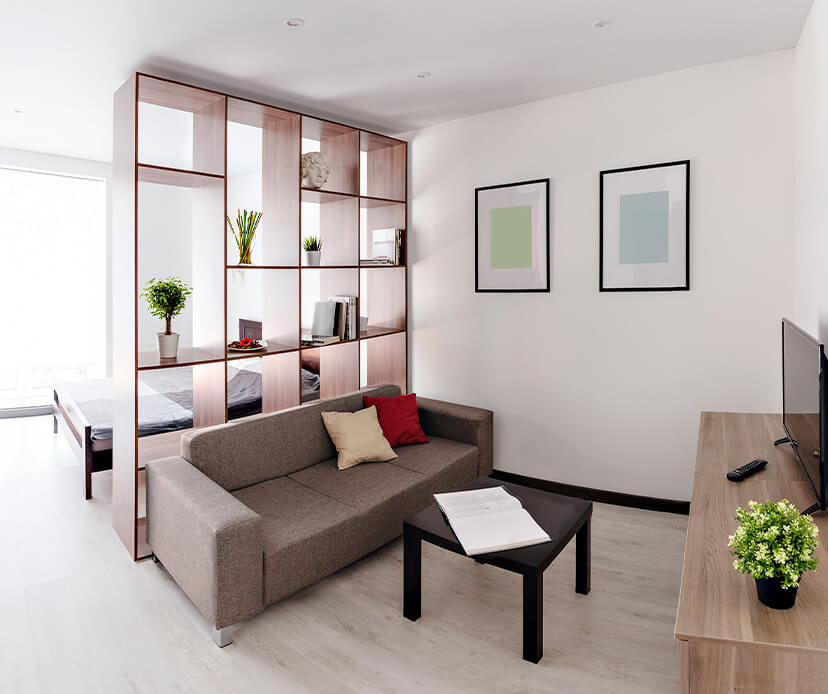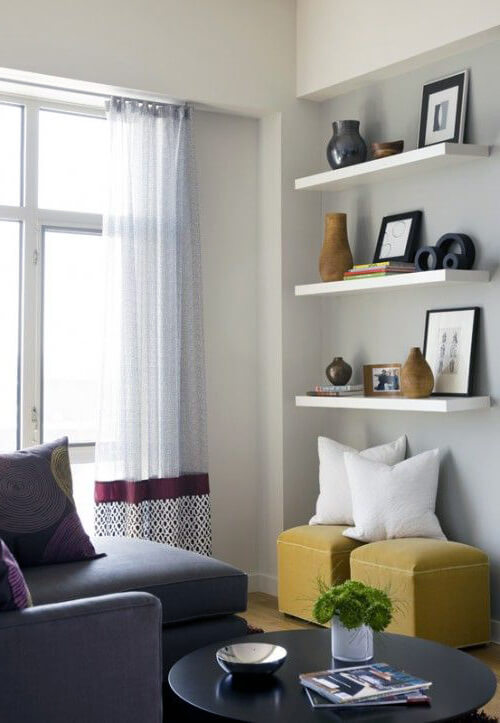If there’s one thing we’ve learned over the past few years, it’s the value of personal space. While many people imagine a large, sprawling house when they think of their dream home, the reality for many of us is quite different. We make do with what we have and, sometimes, that means getting creative. In this article, we’ll explore one such creative measure: dividing a living room into a bedroom.
Whether it’s to accommodate a growing family, frequent guests, or a roommate, carving out a new bedroom from your living room may seem like a daunting task. But fear not! With some thoughtful planning and a little creativity, you can create a cozy, functional space without breaking the bank.
How to Divide a Living Room into a Bedroom
Step 1: Plan Your Space
Before you start moving furniture, take a moment to assess your living room. Measure the room’s dimensions and make note of the room’s natural light sources, electrical outlets, and any existing architectural elements like a fireplace or built-in shelves. Visualize how you might divide the space and think about the purpose of each area. Will the bedroom be a permanent or temporary fixture? What furniture pieces will you need? How will traffic flow through the space?
With this preliminary information in hand, sketch out a rough floor plan. You might even want to use a digital home design tool, which can provide a more precise layout and even 3D visualization. Your plan should aim to balance functionality with comfort, ensuring that each section of the divided room meets its intended purpose.
Step 2: Choose Your Divider
Now, you’re ready to choose the type of divider that best suits your needs. There are many options available, each with its own pros and cons. For instance, you might opt for a simple, cost-effective solution like a folding screen or curtain. These provide visual separation and can be easily moved or removed as needed. I personally use the RANTILA 3 Panel Room Divider, an Amazon’s Choice item. This room divider is flexible and lightweight, and can be effortlessly moved to create any room division that you desire. It’s also highly durable and can be instantly folded and stored for later use.
For a more permanent solution, consider a bookshelf or a freestanding wall. These options offer more privacy and can also provide additional storage or display space. However, they will be more expensive and difficult to move.
A bookcase is also a lovely option, since it offers an additional storage, and you can use it for personal, sleep-related belonings. See the photo below for an example:

Step 3: Decorate and Personalize
Once you’ve installed your divider, the fun begins – decoration time! Start with the basics. Each area should have appropriate furniture – a bed for the bedroom area, and a sofa or chairs for the living area. Remember to utilize vertical space for storage in order to minimize clutter.
Next, think about lighting. Table or floor lamps can provide focused light where it’s needed without brightening the entire room. If the natural light source falls in one area, consider adding artificial lighting to balance it out.
Finally, add some personal touches. Choose a color scheme for each area to give them distinct identities. Add some wall art, photographs, or a favorite throw blanket to make the space truly your own. Remember, the goal is to make each area feel like its own distinct space, even though they are part of the same room.
From Living Room to Bedroom: Additional Tips and Tricks
Having outlined the basic steps, let’s now delve into some extra tips that can help you finesse the transformation from living room to bedroom.
Creative Storage Solutions
When dividing a room, one of the primary concerns is storage space. You may need to get creative in finding places to stow away belongings. Think under-bed storage, floating shelves, or multifunctional furniture like ottomans that open up for extra storage. See the image below for an example:

Regulating Sound
While visual dividers do a great job in partitioning space, they do little to manage sound. You can introduce elements like thick curtains, rugs, or even plants that can absorb sound and provide a bit of noise buffer between the living and sleeping area.
Maintaining Privacy
It’s important to ensure the person using the bedroom area feels a sense of privacy. If you’re using a non-solid divider, consider adding a folding screen around the bed area to provide a bit more seclusion when needed.
Dividing your living room into a bedroom can also be a fun group activity. For example, check out this mother and daughter DIY project:
The Impact of Color and Material Choices
While designing your newly divided spaces, you should pay special attention to your color and material choices. The palette and textures you select can greatly influence the mood and perceived size of your space. Light colors, for instance, can make a space feel larger and more open, while darker tones can give a sense of coziness and intimacy.
Textiles and materials also play a significant role in defining a space. Rugs can help establish boundaries and absorb sound, while also adding comfort underfoot. Curtains not only provide privacy but can soften harsh lines and diffuse natural light.
You can use the following chart to decide what colors to use while creating divided rooms:
Creating Multipurpose Spaces
Even though we’re dividing the room, we should keep in mind the concept of multipurpose spaces. The living room can still double as a guest room, or the bedroom might also serve as a private study area. This is where furniture choice becomes crucial.
Invest in pieces that are versatile and functional – a stylish sofa bed, for instance, can transform from a comfortable couch into a cozy bed. Likewise, a sturdy coffee table might double as a desk or a dining table when required.
Clever Lighting Techniques
The use of light can effectively differentiate the various zones within your divided room. Different lighting styles can create different moods within the same space. For example, you might choose warm, ambient lighting for the living room to create a welcoming and relaxed atmosphere.
On the other hand, the bedroom area might benefit from task lighting, such as reading lamps. And remember, lighting isn’t always about fixtures; mirrors can help bounce light around a room, making it feel brighter and more spacious.
If you’re seeking a unique solution to divide your living room, consider the SUNMORY Floor Lamp with Shelves. This innovative piece combines the functionality of a bookshelf with the ambiance of a dimmable floor lamp. Its sturdy, three-tier design offers ample space for showcasing your favorite decor, books, or collectibles, while the warm, adjustable lighting creates a cozy and inviting atmosphere. Its minimalist, modern aesthetic ensures it will complement a range of interiors. Made from reliable MDF and designed for easy assembly, the SUNMORY Floor Lamp with Shelves is a practical and stylish addition to your space. It’s currently available on Amazon with a 20% discount. Click here to read more reviews and compare prices.
The Bottom Line
Dividing a living room into a bedroom may necessitate a shift in how we think about our living spaces. But as our needs change – whether it’s welcoming a new family member, adapting to work-from-home life, or simply wanting a change – our homes, too, must adapt.
In the end, the process is a balancing act: functionality versus aesthetics, privacy versus openness, separation versus unity. But with careful planning and a dash of creativity, you can not only create a functional bedroom within your living room but also a home that truly reflects who you are.
By embracing this challenge, we learn that limitations can, indeed, be the mother of invention. So, get out your measuring tape, sketch that plan, select your divider, and let your creativity shine!



